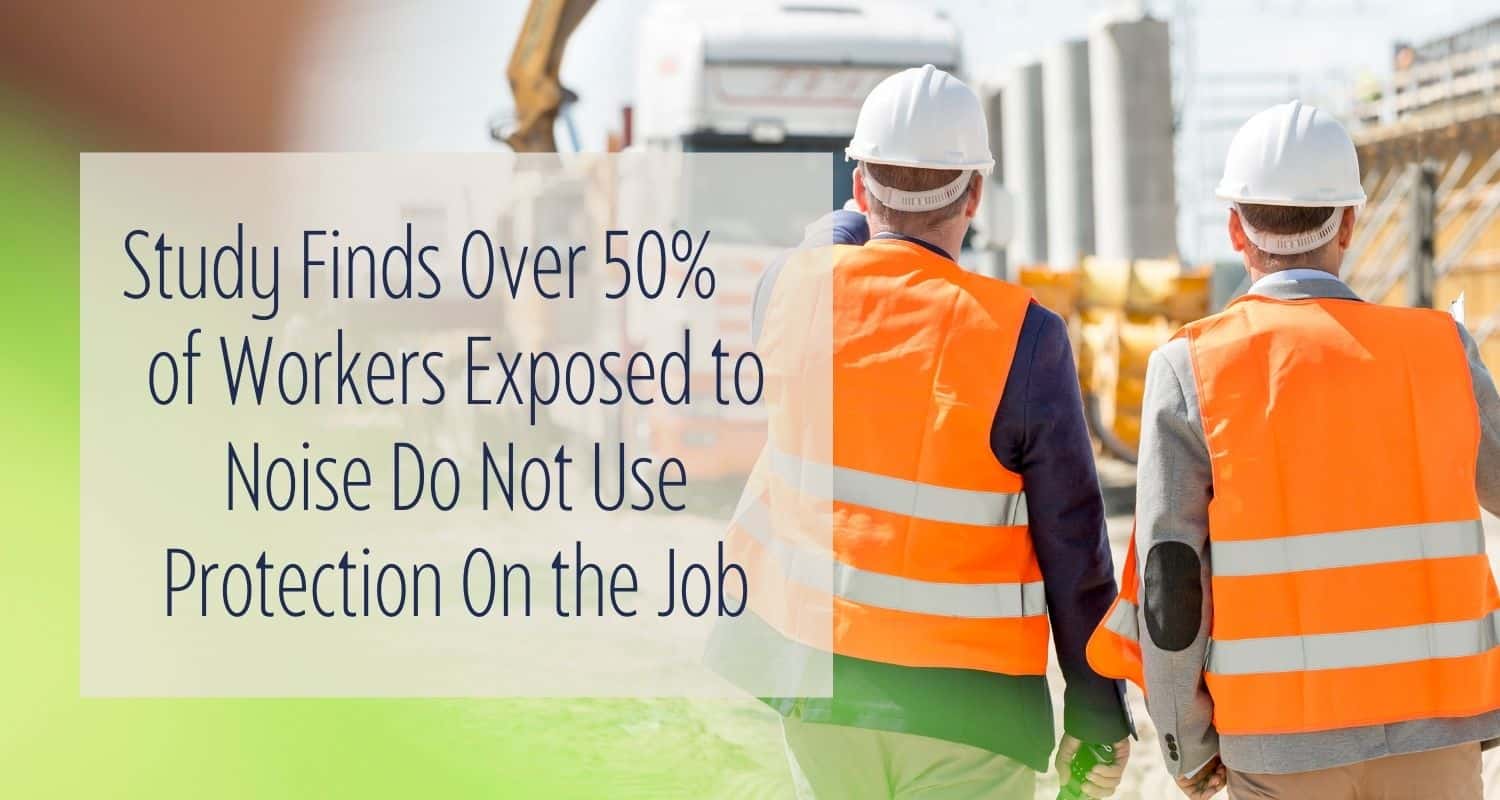
Loud noise is one of the most common causes of hearing loss. People are often exposed to higher levels of noise in their work environments. According to the Hearing Health Foundation, over 22 million people are exposed to hazardous levels of noise in the workplace annually. This daily absorption of loud noise can cause noise-induced hearing loss, especially if safety measures are not being followed. A new study shows that over 50% of people exposed to noise in their work environment do not use protection. This highlights an increased risk of developing hearing loss, a permanent medical condition that has multifaceted effects on daily life.
Workplace Exposure to Loud Noise
Findings from a new study, published in the American Journal of Industrial Medicine in 2021, reveal a widespread lack of protection when it comes to hearing in the workplace. investigates the workplace exposure to loud noise. Researchers collected and analyzed data from a national survey that assessed the use of hearing protection devices and workplace noise exposure from 2007-to 2014. The study included 39,508 workers out of which 2,057 in 2007 and 3,380 in 2014 reported experiencing exposure to loud noise in the workplace. Among all workers exposed to noise, researchers found that:
- 53% did not wear hearing protection consistently
- A few of the industries known for loud noise exposure were found to have the highest rates of non-use of hearing protection:
- agriculture, forestry, fishing, and hunting: 74%
- construction: 52%
These findings highlight how common it is for workers to not wear hearing protection in occupational environments where noise exposure is prevalent. This can easily cause noise-induced hearing loss, impacting health in several significant ways.
Noise-Induced Hearing Loss
This type of hearing loss is caused by one-time or consistent exposure to loud noise. Increased levels of sound can irreparably damage the auditory system, the sensory system for hearing. This includes the ears and brain, which absorb and process incoming sound. Loud noise can damage the hair cells in the inner ear, an integral component of how we can hear. These sensory cells send auditory information to the brain by converting incoming soundwaves into electrical signals. These signals then get carried to the brain where they are further processed and assigned meaning, allowing us to understand what we hear.
Loud noise can desensitize these cells and even kill them, reducing or preventing them from performing their essential function. This results in the brain receiving less auditory information which produces a range of symptoms that strains to hear. Unlike other types of cells we have, hair cells in the inner ear do not regenerate. Humans are born with all the hair cells we will ever have in each inner ear. There are also no medical treatments or interventions that can alter or replenish these cells. This means that the damage they experience is permanent, producing a chronic hearing loss.
Tips to Protect Hearing Health
Noise-induced hearing loss is preventable! There are safety measures you can practice to protect your hearing from loud noise exposure. This includes:
- Wear hearing protection: this is one of the most important safety tips you should implement. Hearing protection includes headphones, earbuds, earmuffs, etc. which offer a physical barrier, reducing the amount of loud noise you absorb. You should wear hearing protection whenever being exposed to loud noise.
- Take breaks: your ears and brain are constantly absorbing and processing speech as well as sound. Take breaks throughout the day to give your auditory system time to rest and replenish. Sit in quieter areas, power off electronic devices, avoid using appliances, etc.
- Access workplace accommodations: if your work environment has hazardous levels of noise, your employer is required to provide safety protection as well as workplace accommodations. Be sure to talk to your supervisor about how you can access these resources.
- Having hearing tested: it is also useful to have your hearing checked regularly. Incorporate a hearing test in annual medical check-ins which is a great way to track your hearing health and identify any changes you may experience.
These strategies are especially important if you work in a noisier environment. These safety measures reduce your risk of developing hearing loss, protecting your hearing health. Contact us today to learn more.
